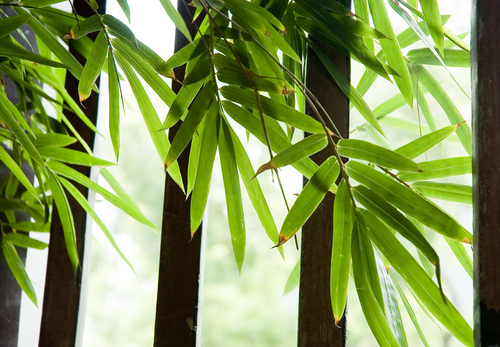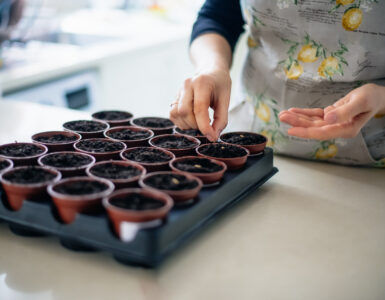Darin Engh, from Engh Gardens shows us how to use those 5 elements to create your own Chinese garden.
A Garden of Harmony
“the garden is an artistic recreation of nature; a landscape painting in three dimensions”
Human beings are children of nature and cannot live without mountains, water, grass, trees, sunshine and air. Without those elements we feel stifled, ill at ease, trapped. Why not make a replica of nature in miniature, “an artificial nature” intended for daily use?
Chinese landscaped gardens put emphasis on the idea of harmony between heaven and Earth. They replicated all of nature’s basic features in miniature on flat ground. Since it is impossible to move mountains, they built rock gardens. However, it takes more than a mountain to make a landscape. Water is another of the gardens’ crucial features. They dug canals and made water flow through them. They must know how to imitate the bends of a river in order to obtain what we call “sinuous currents.” Rivers mean bridges. A small bridge that can be crossed in two or three strides. These gardens cannot be taken in with a single, sweeping glance; the first thing you see is a long, zig-zagging gallery. The “winding path leading to serene beauty.” Secluded rooms hidden behind walls or trees. After a few steps on a winding path, a magnificent garden appears before your eyes. “Changing the landscape with every step” is the second rule that must be observed in classical Chinese garden design. The scene shifts as you walk along. To avoid the impression of monotony and repetition, wall pierced with sculpted windows that divide the gardens into several sections without obstructing a view of the entire garden.
What is Feng Shui? 何謂風水﹖
Feng (Wind) Shui (Water) is the classic Chinese art and science of arranging furniture and possessions to help you find ways to live more harmoniously in the environment. The essence of Feng Shui is “Chi” 氣 (Energy). Wind and water both imply movement, and therefore, the flow and movement of energy play an important role in the garden.
In order to transform the garden into a source of peace and harmony, it is important to gently direct the life energy “Ch’i” throughout all areas of the garden. Friendly spaces, flowing paths, romantic garden niches and seats as well as appropriate accessories help to provide positive energy. How do you keep the flow of energy in our garden display? Avoiding too much clutter is a great start! There is no way a jumbled “jungle look” will keep the energy flowing. Applying the 5 senses (sight, sound, smell, taste, and touch) and the 5 Chinese elements (water, wood, fire, earth, and metal) together, will make your garden become not only balanced but also attractive and pleasant to be in. Where there is a harmonious flow of chi, there is spiritual and physical health and abundance, and good feng shui.
Since feng shui draws on the meaning and influence of the four cardinal directions as well as the points in between them, it can also be used to help site any spiritual garden, whether its focus is healing, tranquility or meditation, or earth-honoring, as well as help you decide where to place a water feature or statue.
Adherents believe that how you set up you home, workspace and garden will influence every aspect of you life: your emotional and physical well-being, your career, even your love life.
The Five Elements: Water, Wood, Fire, Earth and Metal 五行
The element of water is very close to the sense of sound, like a bird bath, a fountain, or even a dry bed path of stones that simulates a river.
The element of wood is like the sense of sight. Planting trees and shrubs in the yard create levels of height, like mountains, supporting your garden. An arbor and bench make your garden more inviting and friendly. Wood is considered the beginning of new life.
The element of earth is like the sense of touch. A beautiful display of containers in the yard provides texture and shape and makes a great difference in garden display. Earth also represents the mountain. A rock garden, large boulders, or a beautiful statue can be used. Earth plants such as Clematis embody stability and peace.
The element of fire symbolizes light. Fire red color stimulates the “chi” movement throughout the garden. In addition, placing a gazing ball in the garden reflects the sun light as well as deflects negativity. The fire element is the most “Yang” of the elements. It is the hot summer or a blast of heat. Red plants or plants with red flowers make excellent Fire remedies.
The element of metal like bronze statues, sun dials and wind chimes will articulate the meaning of your garden. When utilizing the metal element, ensure that it is rounded and pleasing, not sharp and pointed. Metal plants such as Pampas grass donate strength and resilence.
All the incredible trees and flowers also provide other pleasant taste and smell sensations. So, poke around your neighborhood and see if any of your neighbors’ gardens are flowing with “chi”. Let’s all Feng Shui our gardens to achieve the full of power of Chi !
Cardinal Direction
South is associated with summer, recognition and fame, the color red, and the element fire; north with winter, career and life’s journey, the colors blue and black, and the element water; east with spring, family and health, the color green, and the element of wood; west with autumn, children, the color white, and the element of metal. The area of marriage and relationship is located in the southwest, and associated with the color yellow and sometimes pink; the area of mentors, elders, and benefactors in the northwest and associated with gold, silver, and white; the area of knowledge and education in the northeast, with blue; the southeast with wealth and prosperity and with the color purple.
Common Plants
Bamboo – promotes longevity
Evergreen Yew – gives protection
Cornflower – encourages balance in love, family and work relationships
Fern – confers wealth
Geranium – enhances durability for overcoming obstacles
Mint – keeps flying insects from entering your home
Hollyhock – promotes fertility
COLOR
Red – creates positive energy
Green – protects and serves to increase determination
Yellow – clarifies intellectual processes
Blue – reminds us to focus inward
Black -communicates individuality and uniqueness
White – shows you have nothing to hide and are willing to absorb every experience
Pink – summons us to relax
Purple – denotes spirituality
For more information, you can contact Darin at Engh Gardens in Sandy or online at www.enghgardens.com.















Add comment